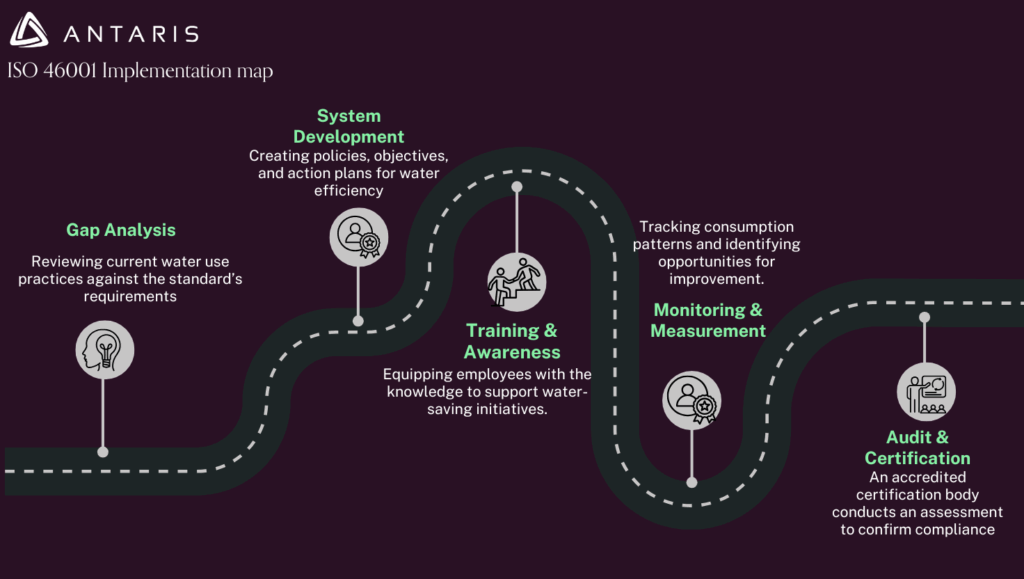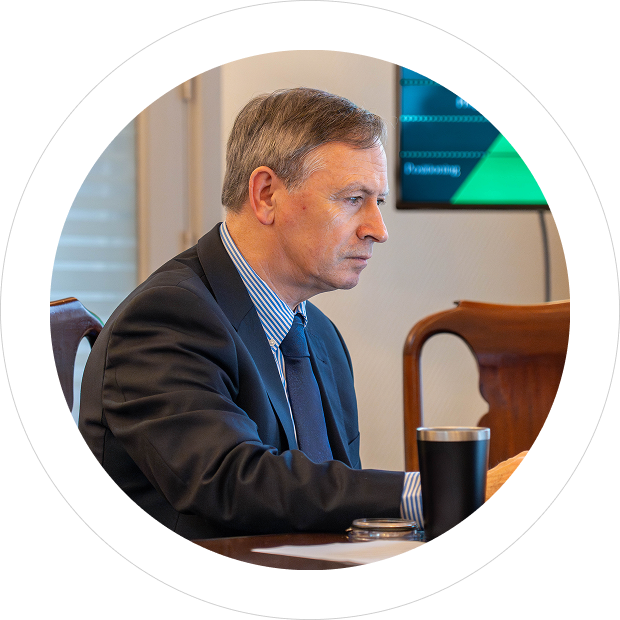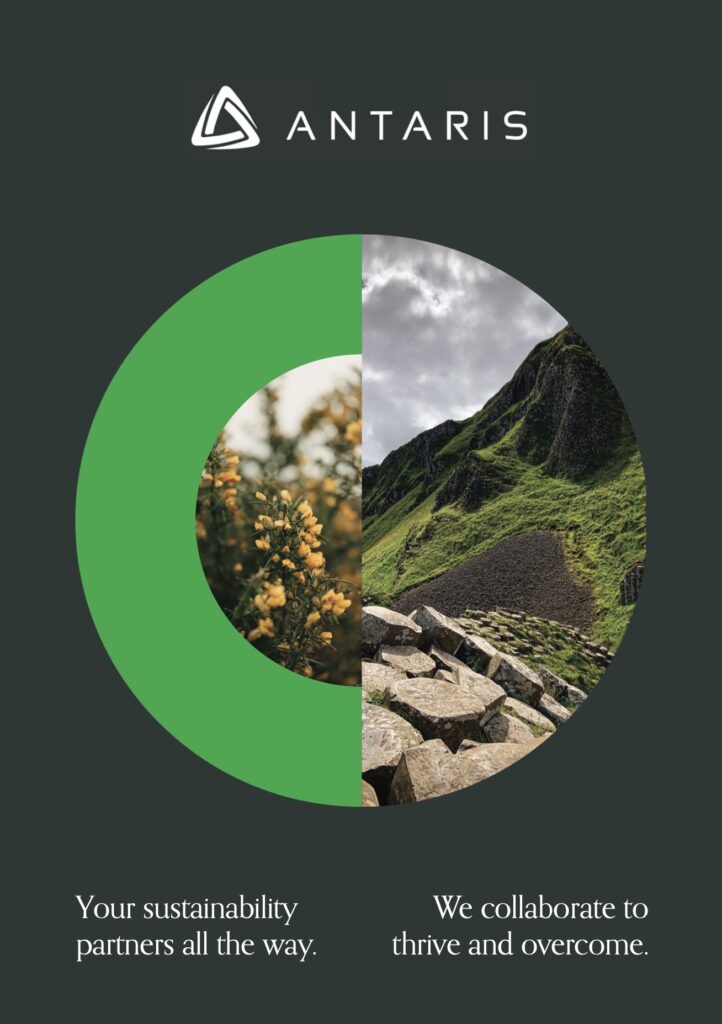ISO 46001: Driving Sustainable Water Efficiency Management
- Introduction to ISO 46001
Water scarcity is becoming an increasingly urgent issue here in Ireland. The proposed project to pipe water from the River Shannon to Dublin, estimated to cost up to €10 billion, highlights the growing challenges we face in securing reliable and sustainable water supplies for the future.¹
As this major infrastructure development moves forward, it’s clear that alongside new supply solutions, effective water management and conservation must be a top priority. ISO 46001:2019, the international standard for Water Efficiency Management Systems (WEMS), offers a practical framework to help organisations across Ireland measure, monitor, and reduce water consumption, supporting efforts to manage our precious water resources responsibly.
Developed by the International Organisation for Standardisation (ISO), ISO 46001 applies to organisations of all sizes and sectors, enabling them to improve water efficiency systematically while contributing to wider sustainability goals, including the UN Sustainable Development Goal 6: Ensure availability and sustainable management of water and sanitation for all.
- Core Principles & Benefits
ISO 46001 revolves around three main principles:
- Reduce: Minimise overall water use through efficient processes, equipment, and behavioral changes.
- Replace: Substitute potable water with alternative sources like rainwater, reclaimed water, or seawater where appropriate.
- Reuse: Treat and reuse water within processes to extend its lifecycle and reduce wastage.
Key benefits for organisations include:
- Lower operating costs through reduced freshwater and waste water bills.
- Compliance with environmental regulations.
- Enhanced corporate reputation and stakeholder trust.
- Contribution to global water conservation efforts.
- Improved resilience against water shortages.
- Implementation and Certification of ISO 46001
- Implementing ISO 46001: Water Efficiency Management Systems begins with a detailed assessment of how water is used across an organisation tracking every point of intake, consumption, and discharge. Accurate data collection is key, revealing usage patterns and areas for improvement.
- A Water Efficiency Policy is then established, supported by measurable targets, such as reducing overall consumption or increasing reclaimed water use. This leads to operational changes like process optimisation, equipment upgrades, and water recycling systems. Staff training and engagement are essential so that efficiency becomes part of everyday culture.
- Performance is tracked through monitoring systems and the Plan–Do–Check–Act (PDCA) cycle, ensuring continual improvement.
- For certification, an accredited body conducts a two-stage audit: a document review and an on-site assessment to confirm that systems are active and effective. Certification lasts three years, with annual surveillance audits to maintain compliance and encourage further gains.
- By following this process, organisations embed water efficiency into their operations, reducing costs, improving sustainability, and meeting global best-practice standards.

- Recent Advancements: Amendment 1 (2024)
In February 2024, ISO released Amendment 1 to ISO 46001, introducing climate action provisions. These updates emphasise climate resilience, water-risk assessment, and adaptation planning ensuring the standard remains aligned with the evolving environmental challenges of a warming planet.
This amendment makes ISO 46001 not only a tool for efficiency but also a framework for climate-conscious water management.
5.Case Study — CHIMEI’s Success Story (July 2025)
In May 2024, Taiwan-based CHIMEI Corporation, a global leader in advanced materials, set out to tackle one of industry’s biggest sustainability challenges responsible water use. Adopting ISO 46001, they mapped their water flow, identified inefficiencies, and launched a Reduce–Replace–Reuse strategy:
- Reduce: Improved equipment and processes to cut water use.
- Replace: Switched from potable water to reclaimed sources.
- Reuse: Installed closed-loop recycling systems.
By March 2025, results were remarkable:
- 80% reclaimed water substitution rate.
- 3.63 million metric tonnes less tap water used yearly—enough for 35,000 people.
- Goal: 100% reclaimed water for industrial operations.https://www.chimeicorp.com/en-US?page=article&id=687f37b1909e109dc89a829e6. Conclusion & Outlook
ISO 46001 is more than just a certification, it’s a commitment to a future where water is valued, preserved, and used responsibly. In an era where water scarcity is intensifying, organisations that adopt this standard position themselves as leaders in sustainability, operational efficiency, and climate responsibility.
With ongoing updates like Amendment 1 and success stories from companies like CHIMEI, ISO 46001 continues to prove that structured, measurable approaches to water efficiency are both achievable and impactful.








